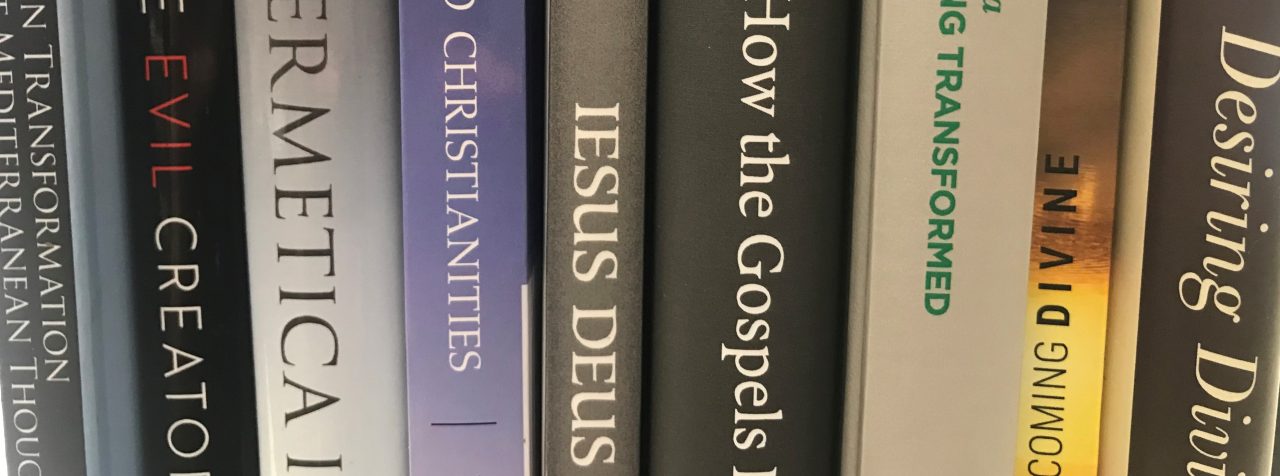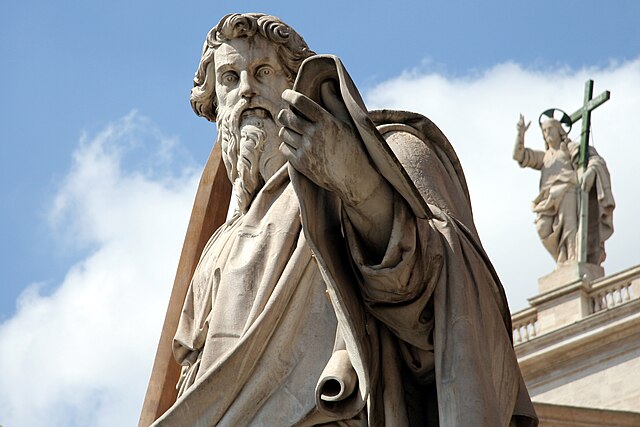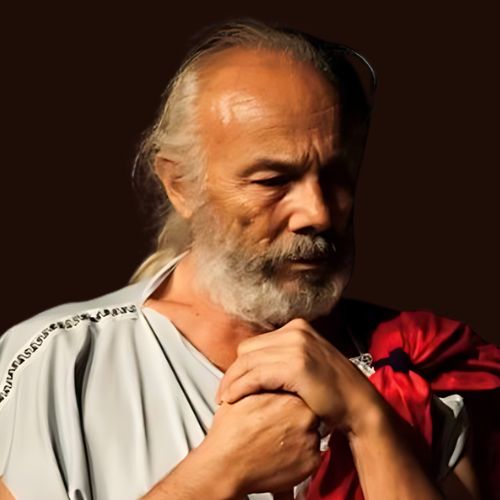Heresiologists accused Marcion of mutilating his own scriptures to suit his theology. In fact, the word for mutilation used in the Latin translation of Irenaeus is circumciso—as if Marcion was a Jewish mohel circumcising the Gospel of Luke in its infancy.
But when this heresiological hypothesis is tested, it is found wanting. Take the example of Ulrich Schmid, the meticulous editor of Marcion’s Pauline collection (the Apostolikon). (Marcion und sein Apostolos: Rekonstruktion und historische Einordnung der Marcionitischen Paulusbriefausgabe [Berlin: de Gruyter, 1995]). Schmid searches up and down Marcion’s Apostolikon to find a consistent principle of emendation, and can find nothing. The only thesis he is willing to float is that Marcion omitted longer chunks of text with positive references to Israel, Abraham, and judgment according to works (Schmid, Marcion 254, 282).
But judgment according to works is missing only in Romans 2:3-11. Schmid acknowledges that Marcion accepts judgment according to works and Christ’s judgment seat in Romans 14:10 and 2 Cor 5:10 (Marcion 250). So there is no consistent editorial pattern. This is a major problem, because as Schmid says, we can’t prove that a particular change comes from Marcion if the change is not consistently made elsewhere in Marcion’s text (255). We can’t say, in this case, that Marcion erases “judgment according to works” if he only does so in one out of four cases.
Truth be told, divine judgment is a motif in both Marcion’s Gospel and Apostolikon. The Pontian transmitted Romans 2:2 (“God’s judgment is true”); Galatians 5:10 (“He who troubles you will bear his judgment”), Romans 2:16 (“In the day when God will judge the secrets through Jesus Christ”); and 2 Thessalonians 2:12 (“so that all who do not believe the truth may be judged”). We also find passages in the Evangelion which portray God or Christ as a judge, such as 12:46 and 13:28.
The same inconsistency appears in the case of Abraham. Tertullian accuses Marcion of erasing references to Abraham in Galatians 3. He is not specific as to whether all the references to Abraham are missing. It would be a huge misstep to infer that Marcion omitted references to Abraham in Romans 4—which Tertullian does not say. In Jason BeDuhn’s reconstruction of the Apostolikon, he prints the reference to Abraham in Romans 4:2. (Bilby, M.G. and BeDuhn, J.D., 2023. BeDuhn’s Greek Reconstruction of Marcion’s Gospel. Journal of Open Humanities Data, 9(1), p.25.DOI: https://doi.org/10.5334/johd.126).
Abraham also appears in Marcion’s text of Galatians 4:22 as the father of two sons through two wives. The wives are allegorized as two covenants: the slave-wife is the covenant of Sinai and the true wife is the true mother, the “holy church” (4:26). Christians are children of the true mother (4:31) which means, implicitly, that they are children of father Abraham as well. Thus Schmid’s idea that Marcion omitted references to Abraham as a model of faith and carrier of blessing fails. Why would Marcion have a problem with Abraham modeling faith? Abraham appears in one of Jesus’ parables (16:22); and a woman receives healing as a “daughter of Abraham” (13:16). These are positive references to Abraham in Marcion’s Gospel. Clearly Marcion did not systematically remove Abraham as a positive example and source of blessing.
The final example concerns positive references to Israel. Here Schmid focuses on Romans 9-11. Tertullian says that a chunk of text was omitted in Romans 9, but he does not say which chunk or how big it is. He skips immediately to what seems to be in Marcion’s favor: Israelite ignorance of God. Thus we know that Marcion’s text had Romans 10:2-4. Then Tertullian skips to 11:33-35 (a doxology to God). Does this mean that Marcion’s text was missing Romans 10:5–11:32? No. Tertullian never says that. He just skips over the text as if it weren’t important; and evidently it wasn’t important—to Tertullian. For Schmid or anyone else to assume that Marcion omitted these verses goes beyond the evidence.
Did Marcion omit all positive references to Israel? No. Ephesians 2:12 says that believers were once alienated from the body politic of Israel, and that they were foreigners to the covenants and the promise—but no longer. Anything negative about Israel here? No. One might read in something negative about “the children of Israel” mentioned in 2 Corinthians 3:7 since they cannot focus on Moses’ face due to its brilliance. But is that really their fault? The cause seems to be, rather, the fact that Moses veils himself in 3:13. So I would not call these references to Israelites negative.
Accordingly, all three large omissions that Schmid attributes to Marcion—positive references to Israel, references to Abraham as carrier of blessing/model of faith, and judgment according to works—don’t hold water. There is no consistent editorial tendency to omit such passages. Schmid himself admits that the influence of Marcion’s theology on his text is much less than previously assumed, but the exceptions he mentions are in fact not exceptions. He also confesses that the smaller differences we see in Marcion’s text are in accordance with what we know of normal textual variation in early manuscripts of the New Testament (Schmid, Marcion 282).
The academic thesis that Marcion is a theological editor is a myth, as Jason BeDuhn has pointed out (“The Myth of Marcion as Redactor: The Evidence of ‘Marcion’s’ Gospel against an Assumed Marcionite Redaction,” Annali di Storia dell’Esegesi 29:1 (2012): 21-48). For my summary of this article and many other resources, see my patreon (patreon.com/mdavidlitwa) and my course on Marcion (https://bc-6561.freshlearn.com/introducing-Marcion). Subscribers to this blog get 20% off my course (see previous blog post).







Leave a comment